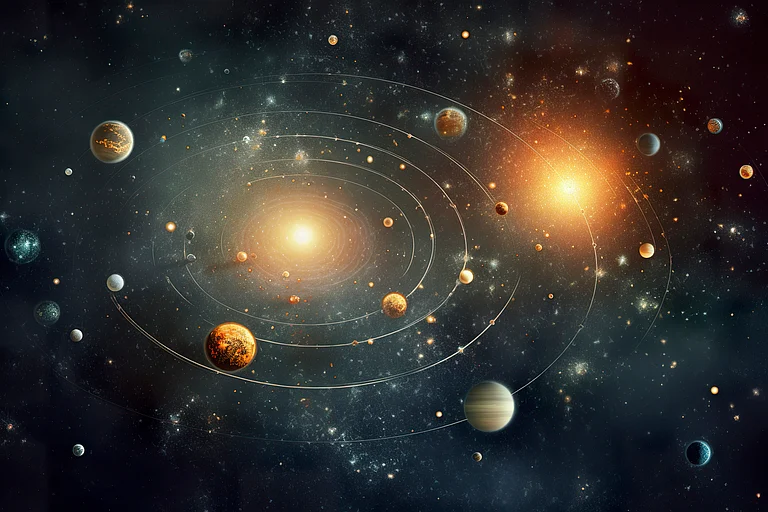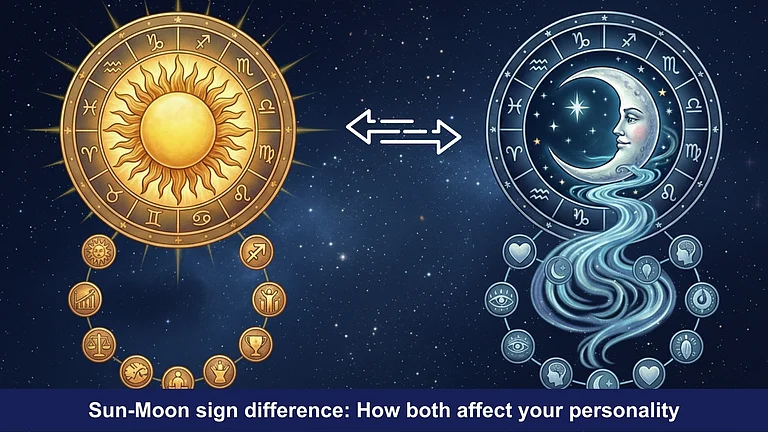On April 8, 2024, sky-watchers throughout North America will have the opportunity to witness a total solar eclipse as it traverses Mexico, the United States, and Canada, offering a stunning celestial spectacle.
Millions of people, including 32 million individuals in the US alone, residing along the path of totality, will have the opportunity to witness the eclipse. In these regions, the moon's shadow will entirely obscure the sun. Those situated directly along the centerline of the path can expect an eclipse duration ranging from 3½ to 4 minutes, as per NASA.
It will be August 2044 before the next total solar eclipse graces the contiguous United States, marking a significant gap since the "Great American Eclipse" of 2017. Additionally, an annular eclipse is not expected to occur across this region again until 2046.
Here’s everything you need to know about the upcoming solar eclipse.
What is a Total Solar Eclipse?
A total solar eclipse happens when the moon moves between Earth and the sun, completely obscuring the sun's surface. Within the path of totality, where the moon's shadow fully covers the sun, observers experience a total solar eclipse. Outside this path, people witness a partial solar eclipse, where only a portion of the sun's face is obscured by the moon.
During a total solar eclipse, the sky undergoes a gradual darkening similar to dawn or dusk, presenting various stages for observers to anticipate.
The eclipse initiation isn't an abrupt appearance of the moon between Earth and the sun; rather, it commences with a partial eclipse where the moon appears to take a "bite" out of the sun, resulting in a crescent-like appearance. Depending on your location, this partial phase can span from 70 to 80 minutes, as outlined by NASA.
As the moon crosses in front of the sun, sunlight beams through the valleys along the moon's horizon, producing radiant drops of light encircling the moon in a phenomenon known as Baily’s beads.
Approaching totality, Baily’s beads gradually vanish until only a solitary point of light remains, resembling a magnificent glistening diamond ring.
When totality arrives, the diamond ring vanishes, and all direct sunlight is obscured. In the darkened sky, bright stars or planets may become visible, and a drop in air temperature accompanies the disappearance of the sun. This sudden darkness often quiets animals.
During totality, the chromosphere, a region of the sun's atmosphere, may form a delicate pink circle around the moon, while the sun's outer atmosphere, known as the corona, emits a radiant white light.
Following totality, as the moon continues its journey across the sun's surface, the diamond ring, Baily’s beads, and the partial solar eclipse reappear on the opposite side of the moon until the sun fully emerges.
Where can I see the Eclipse?
The total solar eclipse will be observable in select regions of Mexico, Canada, and over 10 US states, while a partial solar eclipse in the shape of a crescent is forecasted to be visible in 49 states, subject to weather conditions.
The eclipse will commence over the South Pacific Ocean before traversing North America. The initial point of totality along the path will be on Mexico's Pacific coast, projected to occur at 11:07 a.m. PT (2:07 p.m. ET).
Continuing its trajectory, the eclipse will pass through several US states including Texas, Oklahoma, Arkansas, Missouri, Illinois, Kentucky, Indiana, Ohio, Pennsylvania, New York, Vermont, New Hampshire, and Maine. It will then extend over southern Ontario, Quebec, New Brunswick, Prince Edward Island, and Nova Scotia in Canada, concluding on the Atlantic coast of Newfoundland at 5:16 p.m. (3:46 p.m. ET).
How do I safely view the Eclipse?
The only safe time to observe the sun without eye protection is during the "totality" phase of a total solar eclipse, when the moon completely blocks the sun's light, leaving no sunlight visible, as advised by NASA.
For all other times, including before and after totality, as well as during a partial eclipse, it's crucial to use certified ISO 12312-2 compliant eclipse glasses or handheld solar viewers. Alternatively, you can use telescopes, binoculars, or cameras equipped with special solar filters on the front.
Directly looking at the sun without proper protection can lead to blindness or vision impairment. A notable case during the 2017 total solar eclipse involved a young woman diagnosed with solar retinopathy, resulting from retinal damage due to solar radiation exposure while using eclipse glasses that did not meet safety standards. Solar retinopathy has no cure and can lead to permanent vision damage.
It's important to note that regular sunglasses do not provide sufficient protection and should not be used as substitutes for eclipse glasses or solar viewers, which are significantly darker and meet international safety standards.
Solar eclipse glasses typically feature lenses made of black polymer or resin infused with carbon particles, effectively blocking nearly all visible, infrared, and ultraviolet light, as stated by The Planetary Society. Unlike sunglasses, eclipse glasses also block infrared radiation.
For a reliable source of eclipse glasses and filters for optical devices such as cameras and smartphones, refer to the list compiled by the American Astronomical Society.
Before looking up at the sun, ensure you put on your eclipse glasses, and remember to turn away from the sun before removing them. It's essential to monitor children wearing eclipse glasses to prevent them from removing the glasses while looking at the sun.
If you wear eyeglasses regularly, keep them on and either place eclipse glasses over them or hold a handheld viewer in front of them, as recommended by the American Astronomical Society.
Avoid looking at the sun through any unfiltered optical device, such as camera lenses, telescopes, or binoculars, while wearing eclipse glasses or using a handheld solar viewer, as cautioned by NASA.
Despite the protection provided by the glasses or viewer, solar rays can still penetrate the filter, especially when concentrated through an optical device, potentially causing severe eye damage.
For those who purchased eclipse glasses to observe the "ring of fire," it's advisable to retain them for the upcoming total solar eclipse in April. Store the glasses and viewers at room temperature in either an envelope or their original packaging to prevent scratches.
What can we learn from Eclipses
Eclipses provide scientists with a unique opportunity to investigate the sun's behavior and its interactions with Earth, leading to valuable scientific insights. NASA has chosen to support various projects during the total solar eclipse, aiming to further our understanding of these phenomena.
“Scientists have long used solar eclipses to make scientific discoveries,” said Kelly Korreck, program scientist at NASA, in a statement. “They have helped us make the first detection of helium, have given us evidence for the theory of general relativity, and allowed us to better understand the Sun’s influence on Earth’s upper atmosphere.”
NASA's high-altitude research planes will play a crucial role in a project aimed at capturing unprecedented images of the solar corona during the eclipse, operating from an altitude of 50,000 feet (15,240 meters) above Earth's surface. These images not only promise to reveal new details of the sun's corona but also aid in the search for asteroids orbiting in close proximity to the sun.
During both the annular and total solar eclipses, amateur radio operators will conduct an experiment to observe how these events impact the propagation of radio waves. Operators located in various areas will document the strength and distance traveled by their signals. Scientists are keen on monitoring this distance because the sun's influence on Earth's upper atmosphere, known as the ionosphere, typically enables radio communications to extend over longer distances. However, the eclipse, by blocking the sun, can alter this dynamic.
Scientists and citizen scientists alike plan to observe the sun's most active regions using the Goldstone Apple Valley Radio Telescope as the moon traverses them during both eclipses.
Given the sun's imminent approach to solar maximum later this year, scientists are keen to leverage these eclipses for a range of observations, providing unique opportunities to study the sun's heightened activity.































